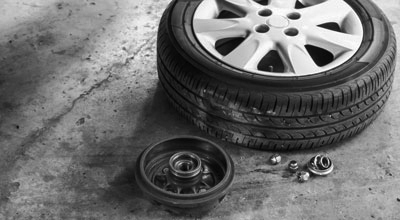Massachusetts Defective Product Attorneys
When Products Break Promises, We’ll Be By Your Side
Every day you place trust in the products you use — both at home and at work. But what happens when those products cause injury? If you've been injured because of a defective product, you may be feeling overwhelmed and uncertain of what to do next. The good news is that you don't have to face this challenge alone.
A defective product attorney can help you recover the compensation you deserve. Whether you were injured by a defective power tool, a defective piece of equipment, or any other type of defective product, the experienced attorneys at Baker Law will be by your side.
There are Three Types of Defective Product Lawsuits
To help you better understand how defective product lawsuits work, we can break it down into three basic types of lawsuits: negligence, strict liability, and breach of warranty. Let’s take a look at what each one means.
Negligence
Manufacturers have an obligation to consider all the ways in which their product might reasonably be used. Then they have to conduct tests to make sure their product is safe to be used in every foreseeable way. If the manufacturer knows of any potential safety concerns, they are required to create a label to warn users of the limits of the product.
For example, things that hold your weight, like ladders, need to be tested to make sure they’re strong enough to hold up to a certain number of pounds.
If there’s a limit to how much weight the ladder can hold, the manufacturer is required to include that limit on a warning label placed on the ladder.
If the manufacturer did not do the proper testing or sold a product they knew did not pass its safety tests – and you were injured as a result – they can be sued for negligence.
Strict Liability
You might want to file a strict product liability case if you can prove the product was inherently defective and the defect directly caused your injury. You also need to be able to prove that the product was defective when it left the manufacturer’s control.
For example, a nail gun that is prone to misfiring could be subject to a strict product liability lawsuit if it was always prone to misfiring, and if it misfired and caused an injury.
Breach of Warranty
When a product doesn’t work the way it’s supposed to, the manufacturer could be in breach of warranty. Many products are sold with a warranty, meaning the manufacturer promises to replace the item at no cost to the buyer if the product breaks down within a certain time frame.
Even without a written warranty, there is an implied warranty, which ensures buyers – and their workers – have a right to expect a product to work as intended.
An example of a breach of warranty might be a blowtorch that burns you or explodes in your hand, even when you follow all the safety instructions.
We offer free consultations to determine whether you have a product liability lawsuit. If you have a case, we’ll take care of everything moving forward. That includes:
- Conducting an investigation
- Hiring experts
- Negotiating with the manufacturer
- Fighting for you in court
Common Causes of Defective Products
Most defective product cases fall into one of three categories: defectively manufactured products, design flaws, and failure to provide adequate warnings or instructions. These are the reasons why you should keep the owner’s manual, retain all maintenance records, photograph any and all warning labels, and preserve the condition of the product in the state it was in at the time of the injury.
Defectively Manufactured Products
Some defects occur during the manufacturing process of a product. In these cases, we work to make sure the manufacturer is held accountable for injuries sustained because of the manufacturing defect. Some examples of common defectively manufactured products include:
- Parts attached incorrectly
- Electrical circuits installed improperly
- Plastic or material that was improperly manufactured
- Incorrect bolts or fasteners
Design Defects
Some products are designed in a negligent or defective manner. Some products may be manufactured in accordance with their original design, but the actual design itself was negligent or defective. Some examples of poorly designed products include:
- A helmet that cracks or breaks as a result of a minor impact
- A table or chair that collapses under a normal amount of weight
- Mechanical defects on cars or trucks. These can range from braking malfunctions to engine failure
Failure to Warn Using Labels or Instructions
Some products are inherently dangerous — table saws, chain saws, snow blowers and wood chippers. But proper warning and instructions, if followed, minimize the opportunity for injury. A claim based on a failure to warn alleges that the manufacturer failed to provide adequate warnings or instructions about the safe use of the product, and injury occurred due to the undisclosed risk. Some common examples of injuries caused by failure to warn include:
- Medications — instructions on proper use and identifying side effects and potential dangers
- Power equipment — instructions on safe usage
- Poisonous solvents — sold without instructions on safe handling
- Any other equipment that is mislabeled or lacks the proper warnings
Regardless of the type of product liability claims you’re filing, you should always consult with a defective products lawyer. Consumer protection laws are complicated, and their application varies depending on the circumstances.
Reach Out for a Case Evaluation with No Obligation or Fee — Just Advice.
Injured by a defective or dangerous product? Contact Baker Law — especially before the dangerous or defective product is altered, repaired, or destroyed. Get advice at NO cost and with NO obligation. We can answer your questions and provide direction. If you retain us as your attorneys, we handle all communications and negotiations with insurance companies.
Focus on your family and your health, and we’ll get you the maximum compensation you deserve.


